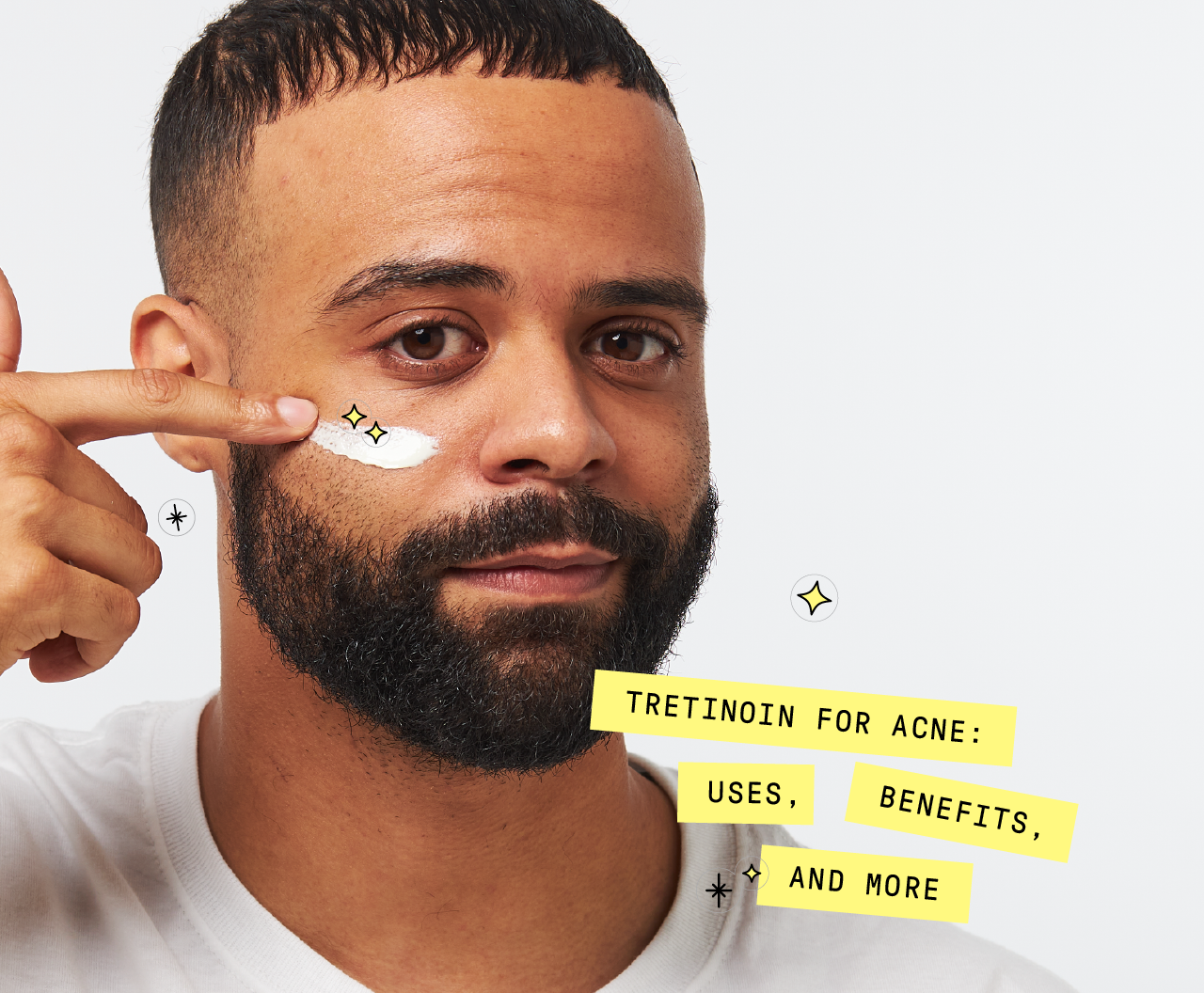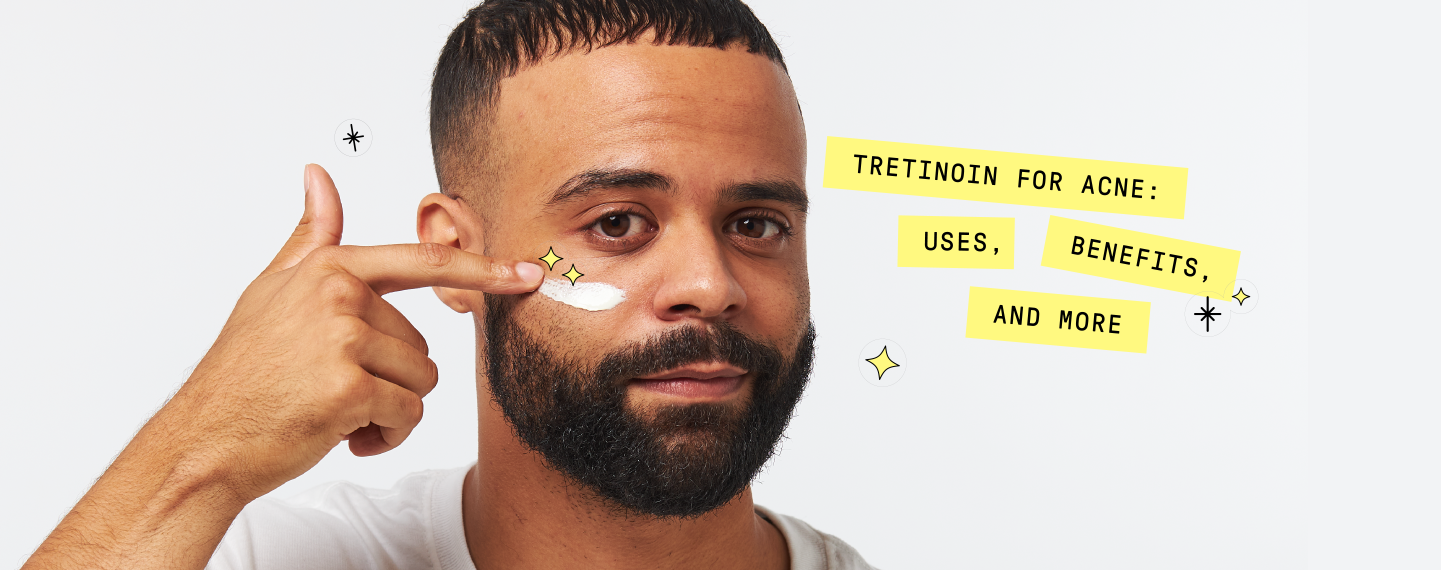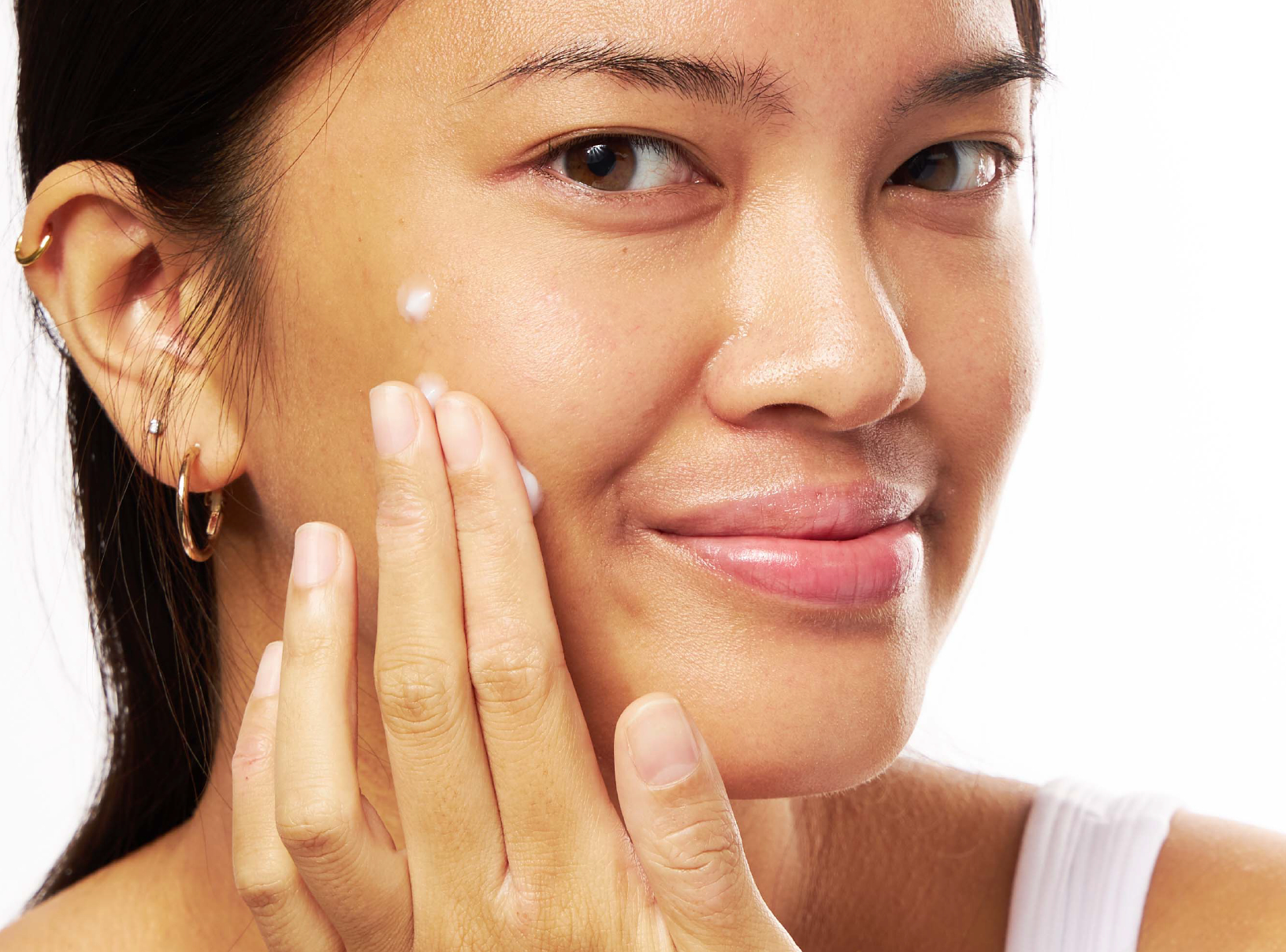Education
Tretinoin for Acne: Uses, Benefits, and More


SHARE
Education
Tretinoin for Acne: Uses, Benefits, and More
Medically reviewed by Aimee Paik, MD
Written by Apostrophe Team
Last updated 11/1/2024
We’ll be honest… Dealing with acne can be a real pain. It shows up at the worst times, it can feel as bad as it looks, and making it go away can seem impossible.
Enter: tretinoin for acne.
Over the years, tretinoin has become one of the gold-standard treatments for acne woes - and for good reason.
If you’re dealing with acne breakouts and want the relief you’ve been looking for, tretinoin - or a retinoid like it - may be just what the doctor ordered.
We’ll be honest… Dealing with acne can be a real pain in the you-know-what. It always pops up at the worst possible times, it can feel as bad as it looks, and getting rid of it often seems impossible.
Fun, right? Thankfully, there are a number of acne treatments on the market today. And while over-the-counter products work for some people, others need something a bit stronger - like prescription tretinoin.
If you’re dealing with acne breakouts, a board-certified dermatologist or healthcare provider may suggest trying a tretinoin topical cream.
This medication has been found to be an effective way to manage acne for many people.
Want to learn more about it? You’re in luck - we have you covered!
What is tretinoin used for
Tretinoin is in a family of medications called retinoids. It’s a commonly prescribed treatment for acne and is also used to help reduce some of the telltale signs of aging.
Retinoids reduce acne lesions by removing dead skin cells to unclog pores. Aside from tretinoin, other members of the family include isotretinoin and retinol.
Tretinoin is often used to treat different types of acne - mild acne, moderate acne, cystic acne and hormonal acne.
In addition to that, retinoids like tretinoin can help combat the signs of sun damage or photo-aging of the skin caused by spending too much time in the sun.
A dermatology provider may also prescribe tretinoin to deal with things like fine lines and wrinkles, hyperpigmentation (a.k.a, dark spots), and other common signs of aging.
Does tretinoin work?
It sure does - especially when treating moderate and severe acne.
According to research published in the International Journal of Basic and Clinical Pharmacology, when used as a topical medication, tretinoin is indeed an effective way to treat acne breakouts.
Topical tretinoin has been shown to reduce both inflammatory and non-inflammatory acne lesions, free up clogged pores, and help lessen the appearance of acne scars.
For more severe forms of acne, tretinoin may be combined with another treatment, such as spironolactone or oral antibiotics like doxycycline.
How to use tretinoin
If you’re prescribed tretinoin, you’ll probably want to incorporate it into your routine as soon as possible.
👋 To apply your tretinoin topical cream, start by washing your hands. Using your clean hands, wash your face with mild soap.
💆 Dry your face gently but thoroughly and apply a moisturizer right after. Using clean fingertips, apply the tretinoin to the affected area - one pea-sized amount is enough for your whole face, so be cautious
💫 Once you’re finished, wash your hands thoroughly. It’s important not to get tretinoin in your eyes, ears, mouth or any other sensitive area.
Unless you’ve cleared it with your dermatology provider, you should not use any other topicals for the treatment of acne (like salicylic acid or benzoyl peroxide) along with tretinoin.
Side effects of tretinoin
Just because tretinoin is an effective way to treat acne breakouts doesn’t mean it doesn’t come with potential side effects.
Common side effects of tretinoin include:
Stinging
Skin irritation
Red or scaling skin
Swelling
Dry skin
Peeling
Something you should also be aware of is what’s called the “tretinoin purge.” As we mentioned above, tretinoin works by increasing your skin cell turnover rate.
In the long run, this is great and leads to healthier-looking skin and less acne.
But when you first start using it, your skin may actually look worse - redness, peeling, irritation… All the fun stuff.
Your skin should get used to tretinoin topical treatment and these side effects should subside (if you experience them at all) within the first few weeks of use, and the tips we provided above should definitely help reduce side effects.
If they don’t and you notice that skin dryness, skin irritation or any of the other side effects persist, you should speak with your dermatology provider.
Another thing to know: if you have sensitive skin or other skin conditions, you may be more likely to experience some of these side effects.
There are some more serious side effects that may occur after taking tretinoin, too. These are rare, but it’s a good idea to be aware of them. They are:
Itching
Hives
Pain or discomfort
If you experience any of the above adverse effects, contact your dermatology provider as soon as possible.
Understanding tretinoin for acne
In the fight against acne, we’ll take as many weapons as we can get - and tretinoin is one of the best available.
This prescription-only topical cream is considered a mainstay in the treatment of acne, and board-certified dermatologists all over the world prescribe it to their patients every day.
While it can have some pretty rough side effects as your skin gets used to the medication (usually in the first few weeks of use), the data is clear - this stuff works.
Tretinoin is only available with a prescription, but Apostrophe makes it simple to get access to the right prescription treatments for your skin concerns.
Sources:
Retinoids. American Osteopathic College of Dermatology. Retrieved from https://www.aocd.org/page/Retinoidstopical
Tretinoin Topical. Medline Plus. Retrieved from https://medlineplus.gov/druginfo/meds/a682437.html
Leyden, J., Stein-Gold, L., Weiss, J., (2017). Why Topical Retinoids Are Mainstay for Therapy for Acne. Dermatology and Therapy. Retrieved from https://www.ncbi.nlm.nih.gov/pmc/articles/PMC5574737/
Khemani, U., Khopkar, U., Nayak. C., (2016). A comparison study of the clinical efficacy and safety of topical adapalene gel (0.1%) and tretinoin cream (0.025%) in the treatment of acne vulgaris. International Journal of Basic and Clinical Pharmacology. Retrieved from https://www.ijbcp.com/index.php/ijbcp/article/view/311
Shop this post

Tretinoin
Like what you just read? Sign up for our email list to get the scoop on skincare science delivered straight to your inbox.

Deep Dives
A dermatologist shares his thoughts on the recent studies about benzoyl peroxide and benzene.
Read More
Education
What is milia?
What is milia? Today, we’re jumping into one type of bump that you may have heard about most commonly in infants — milia.
Read More
Education
Best moisturizer for acne-prone skin
If you have combination acne-prone skin, figuring out which moisturizer is best for your skin might be tough. In this guide, we break down the best moisturizer for combination, acne-prone skin.
Read More
